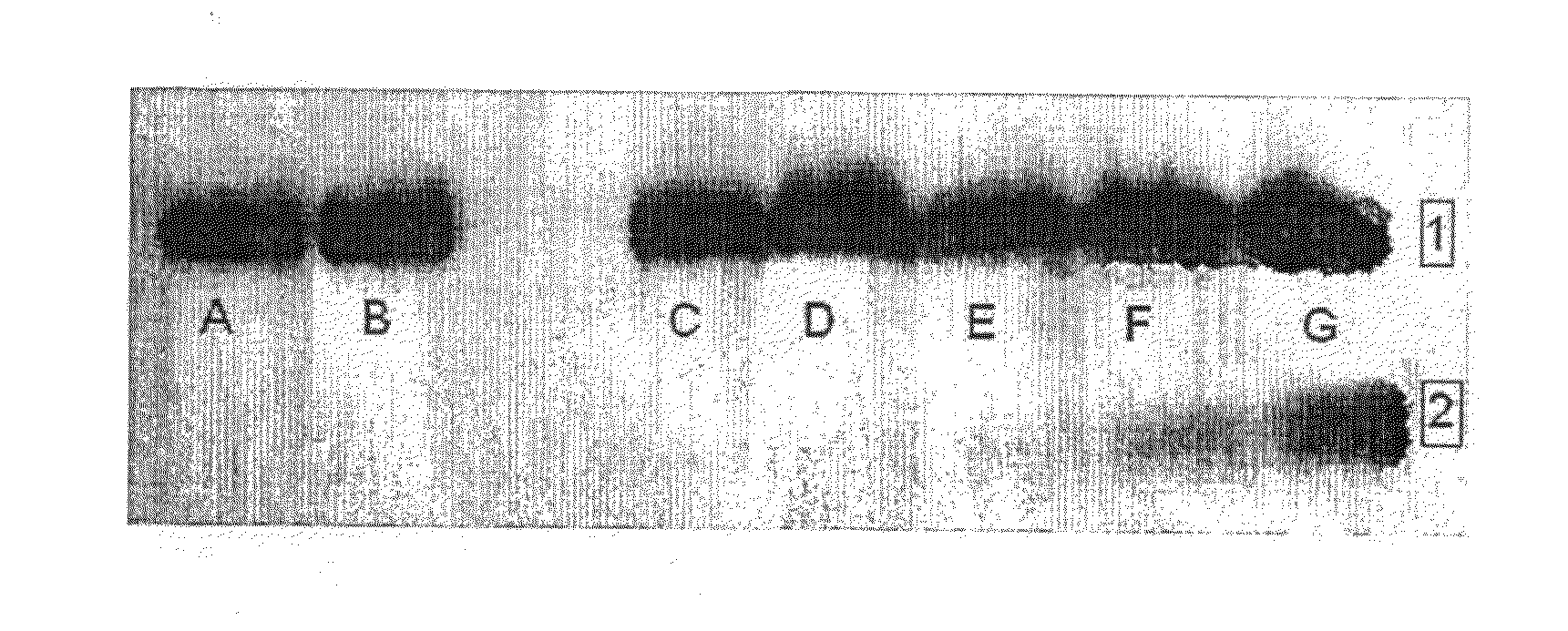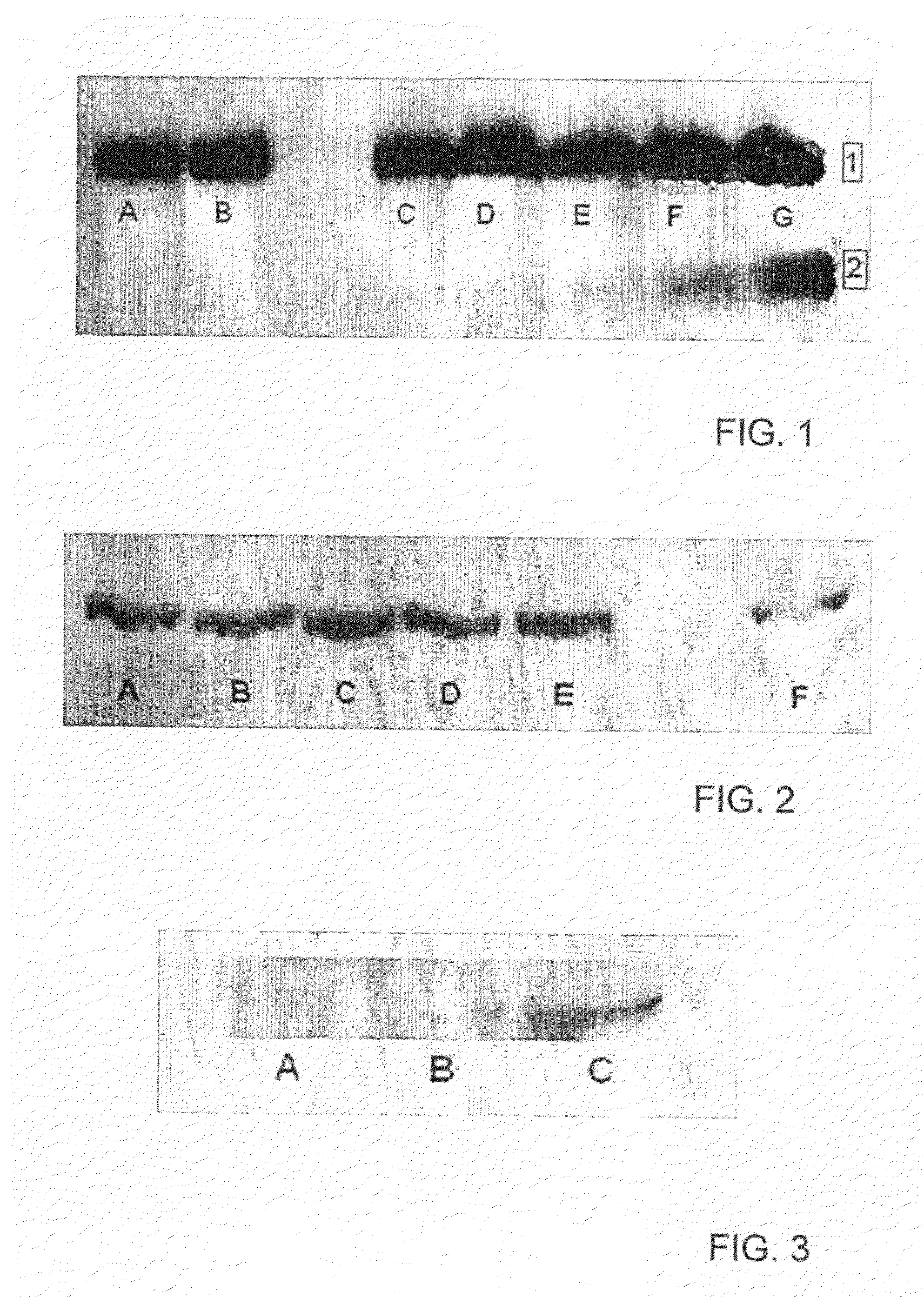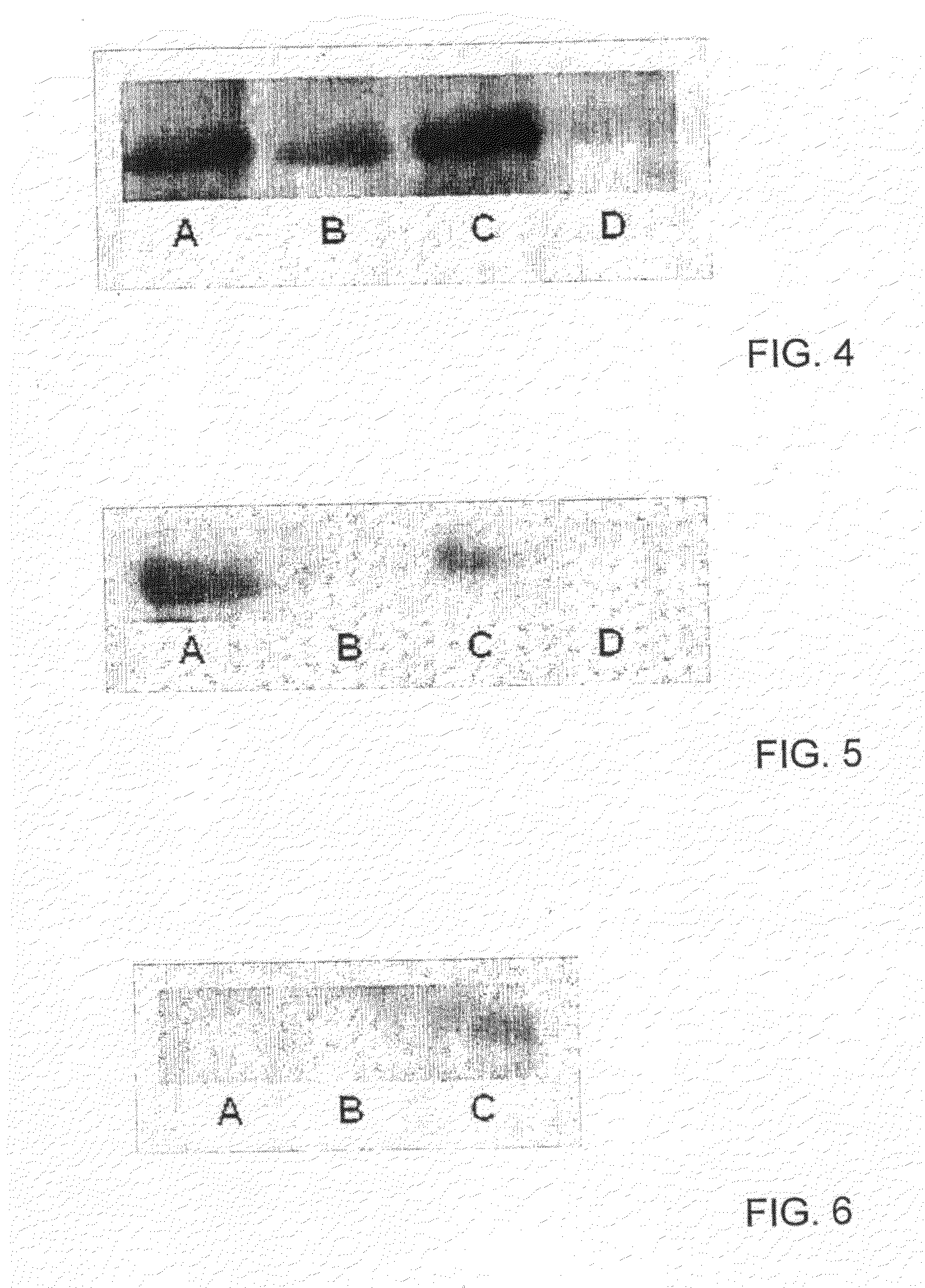Therapeutic methods using a thymus peptide
a technology of thymus and thymus, which is applied in the direction of peptide sources, animal/human peptides, sugar derivatives, etc., can solve the problems of oxidative modification of lipoprotein particles, and achieve the effects of slowing down the progression of the disease, and reducing the risk of cancer
- Summary
- Abstract
- Description
- Claims
- Application Information
AI Technical Summary
Benefits of technology
Problems solved by technology
Method used
Image
Examples
example 1
[0177]The purpose of this example was to show that the T101 peptide can cause apoptosis in activated monocytes.
[0178]106 U937 cells, a human leukemic monoblast cell line, were incubated for 18 hr at 37° C. in RPMI buffer+10% fetal calf serum (FCS) with different concentrations of T101. The FCS causes activation of the U937 cells. The cells were then lysed in RIPA buffer in the presence of protease inhibitors, and run on SDS-PAGE. A Western blot of the gel was performed with anti-caspase 3 antibody. The results are presented in FIG. 1.
[0179]The lanes of the gel were loaded with lysed cells which had been incubated with the following concentrations of T101: A,B—0 pg / ml (control); C—10 pg / ml; D—100 pg / ml; E—1 ng / ml; F—10 ng / ml; G—100 ng / ml. The upper row in the gel (marked [1]) shows the location of the proenzyme caspase, while the lower row (marked [2]) shows the location of activated caspase 3 as a result of proteolytic cleavage of the proenzyme.
[0180]It can be seen that increasing a...
example 2
[0181]The purpose of this example was to show the apoptosis-inducing effect of T101 using a different marker.
[0182]U937 cells were treated as in FIG. 1 and loaded on SDS-PAGE, except that the gel was treated with antibody against the 85 kDa cleavage product of PARP, which is produced by the cleavage of PARP by caspase 3, and is active in apoptosis. The results are presented in FIG. 2.
[0183]The lanes of the gel were loaded with lysed cells which had been incubated with the following concentrations of T101: A —100 ng / ml; B —10 ng / ml; C —1 ng / ml; D —100 pg / ml; E —10 pg / ml; F —0 pg / ml (control). The bands show the location of the 85 kDa cleavage product of PARP. It can be seen that even 10 pg / ml of T101 significantly increased the amount of the 85 kDa cleavage product of PARP, which can lead to apoptosis of the cells. These results support the results of the previous example.
example 3
[0184]This example is similar to Example 2 except that it compares the effect of T101 on activated as compared to nonactivated monocytes.
[0185]U937 cells were treated as in FIG. 2 except that some of the cells were not treated with FCS, i.e. not activated. The lysed cells were loaded on SDS-PAGE, which was treated with antibody against the 85 kDa cleavage product of PARP. The results are presented in FIG. 3.
[0186]The lanes of the gel were loaded with lysed cells, as follows: A—activated cells+0 ng / ml T101 (control) [the result with nonactivated cells was similar]; B—nonactivated cells+100 ng / ml T101; C—activated cells+100 ng / ml T101.
[0187]It can be seen that T101 induced the cleavage of PARP only in the activated monocytes. Thus, it can be seen that the apoptosis inducing effect of T101 is specific for activated monocytes, which are a risk factor for diseases such as atherosclerosis.
PUM
| Property | Measurement | Unit |
|---|---|---|
| Fraction | aaaaa | aaaaa |
| Level | aaaaa | aaaaa |
Abstract
Description
Claims
Application Information
 Login to View More
Login to View More - R&D
- Intellectual Property
- Life Sciences
- Materials
- Tech Scout
- Unparalleled Data Quality
- Higher Quality Content
- 60% Fewer Hallucinations
Browse by: Latest US Patents, China's latest patents, Technical Efficacy Thesaurus, Application Domain, Technology Topic, Popular Technical Reports.
© 2025 PatSnap. All rights reserved.Legal|Privacy policy|Modern Slavery Act Transparency Statement|Sitemap|About US| Contact US: help@patsnap.com



